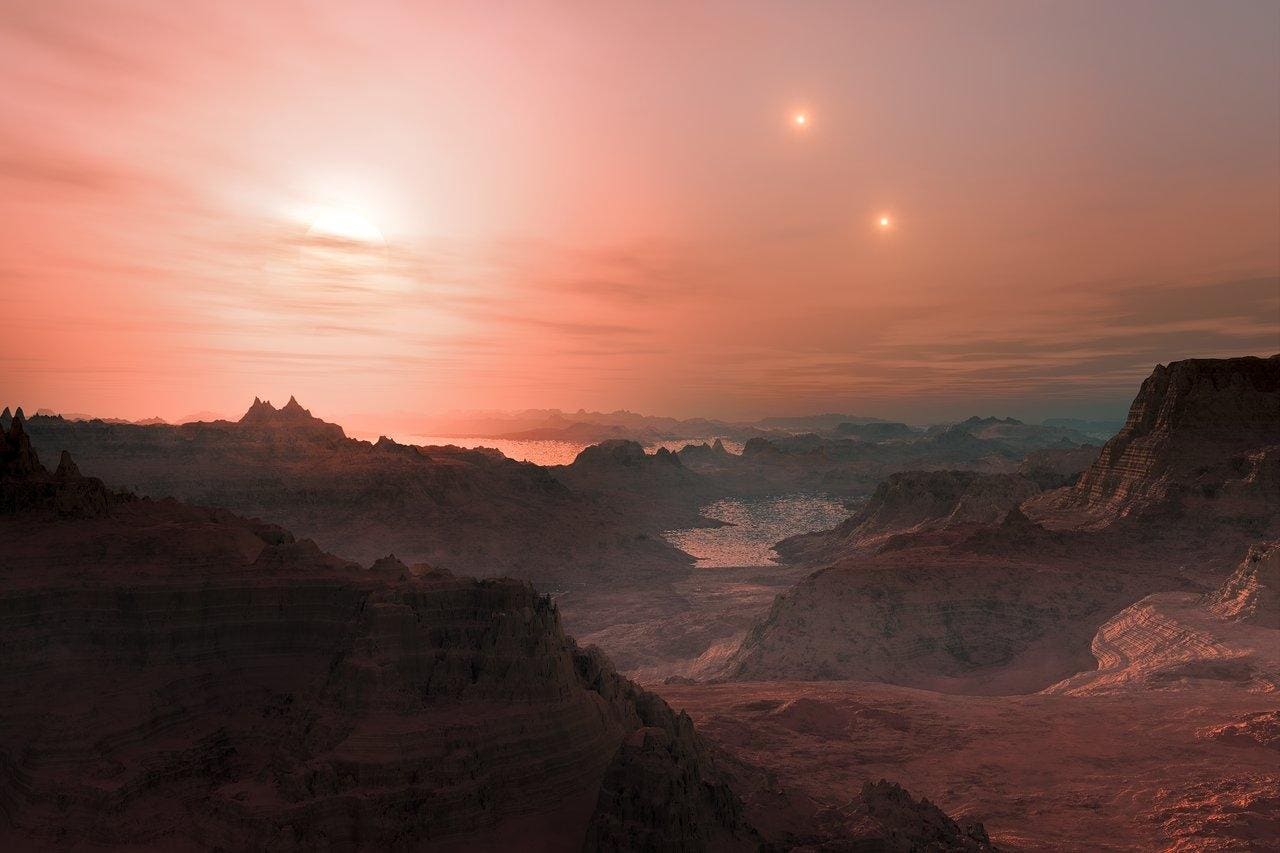This artist’s impression shows a sunset seen from the super-Earth Gliese 667 Cc. Astronomers have … More
There could be potentially hundreds of Earth-like planets close to the solar system, according to a new study that has found them to be common around the most typical kind of star.
Red dwarf stars — low-mas stars about a tenth to a fifth the mass of the sun — make up about 80% of the stars in the Milky Way, according to the European Southern Observatory. It’s also thought that 20 out of the 30 stars near Earth are red dwarfs, including the closest star, Proxima Centauri, which was recently discovered to have potentially two planets in orbit.
Now, results from a new project called CARMENES have led to the identification of four new exoplanets — and a powerful new insight into where more are likely to be found.
Four New Exoplanets
An exoplanet is a planet that orbits a star other than the sun. Using an instrument called CARMENES at the Calar Alto Observatory near Almería, Spain, astronomers studied 15 red dwarf stars and discovered four new planets. Three of the planets were Earth-sized, while one was 14 times larger.
Extrapolating that data in a new paper published in Astronomy & Astrophysics shows that stars with less than 16% of the star’s mass have, on average, about two planets that are less than three times the mass of Earth.
‘Quite Remarkable’ Findings
The discovery is limited to small planets — large planets appear to be rare around red dwarfs. “It is quite remarkable how often small planets occur around very low-mass stars,” said lead author Dr Adrian Kaminski from the Königstuhl Observatory at the Center for Astronomy at Heidelberg University, Germany. “This suggests that low-mass stars tend to form smaller planets in close orbits.”
Red Dwarves And ‘Earth 2.0’
Of the 5,000 exoplanets discovered so far, none is a twin of Earth in terms of the type of star it orbits or its mass, radius and surface temperature. However, aside from orbiting a red dwarf star, the three small planets discovered using CARMENES do meet other criteria.
“Small, rocky planets in the so-called habitable zone – the area around a star where water could exist in liquid form – are potential candidates for habitable worlds,” said Prof. Dr Andreas Quirrenbach, director of the Königstuhl Observatory. He added that since they’re common and long-lived, red dwarf stars could provide stable environments for the development of life.
Wishing you clear skies and wide eyes.
